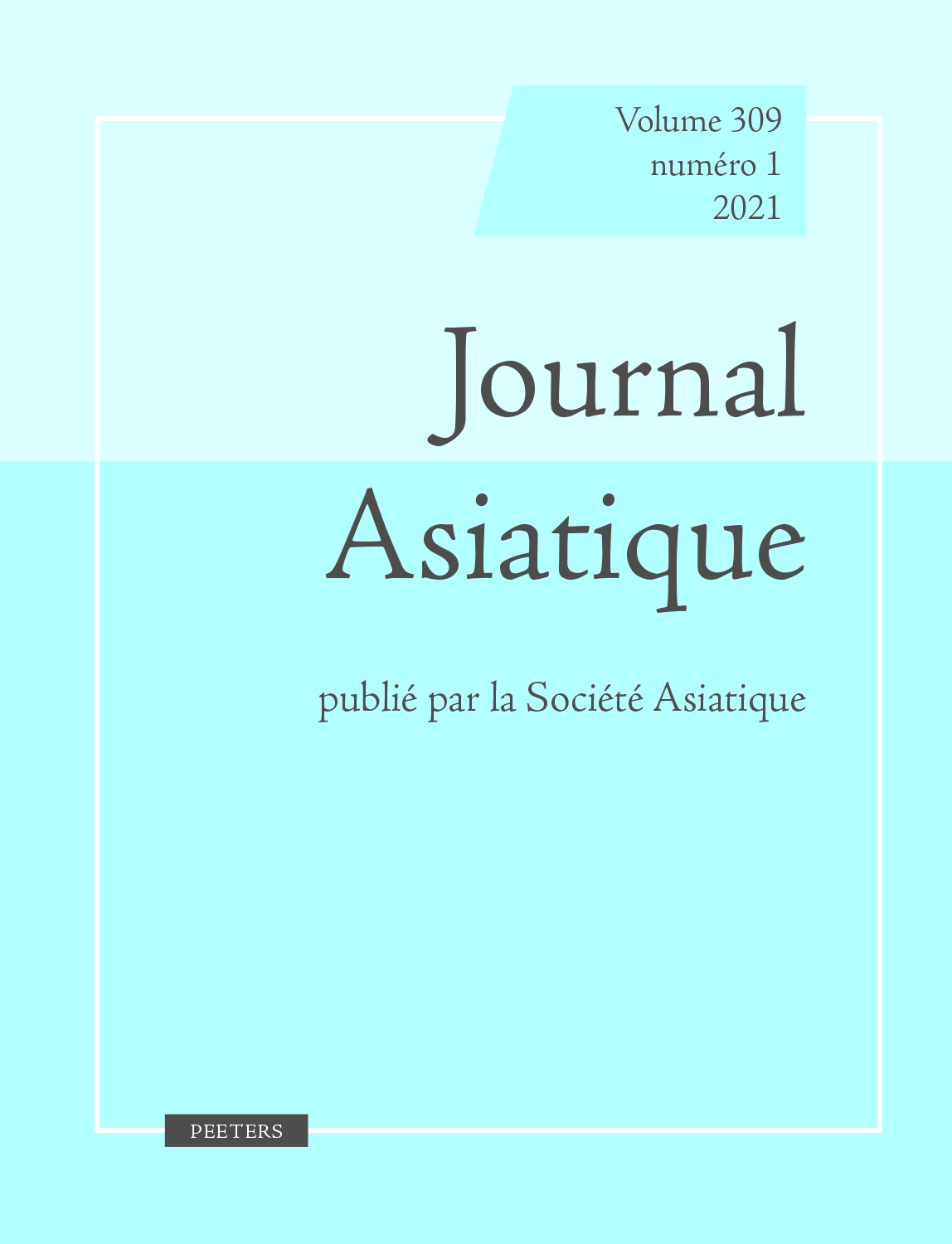 previous article in this issue previous article in this issue | next article in this issue  |

Preview first page |
Document Details : Title: L'espace cérémoniel dans la cour de l'empereur moghol Shāh Jahān Author(s): JOSHI, Harit Journal: Journal Asiatique Volume: 298 Issue: 1 Date: 2010 Pages: 31-107 DOI: 10.2143/JA.298.1.2055066 Abstract : This article aims to study the notion of ceremonial space in the court of the Mughal emperor Shāh Jahān (r.1628-1658). Based on an analysis of miniatures and Persian language court chronicles, foreign travellers’ accounts and architectural remains, it tries to examine the manner in which the emperor organised the physical setting of his court, both when it was located within the premises of the imperial palace-fortresses of the Mughal capital cities as well as when it was on tour, in such a manner so as to firmly affirm his authority over the members of the nobility and his subjects. It also tries to explain the role of the imperial officers who were assigned the task of maintaining order and decorum in the courtly assemblies, a field which has over the years, tended to be somewhat ignored by students of Mughal history. The article underlines the view that the hierarchial nature of the spatial disposition of the imperial court under Shāh Jahān was meant to be an important metaphor for the central position it occupied in the world, at least in the ruler’s own political imagination. Cet article est consacré à la notion d’espace cérémoniel dans la cour de l’empereur moghol Shāh Jahān (r.1628-1658). A partir des miniatures et des chroniques de cour rédigées en langue persane, des récits des voyageurs étrangers et des vestiges des édifices de l’époque, il analyse la façon dont l’empereur organisait la disposition physique de sa cour, aussi bien lorsqu’elle se tenait à l’intérieur des palais-forteresses des capitales mogholes que quand elle était en tournée, dans le but d’affermir son autorité sur les nobles et ses autres sujets. Il étudie également le rôle des officiers impériaux en charge du maintien de l’ordre, ainsi que l’étiquette en vigueur lors des assemblées impériales, un domaine quelque peu ignoré par les étudiants de l’histoire moghole au cours des années. L’article soutient l’hypothèse selon laquelle l’aménagment très hiérarchisé de l’espace de la cour impériale sous Shāh Jahān constituait une métaphore de la position centrale que le souverain occupait dans le monde, au moins dans son propre imaginaire politique. |
|


